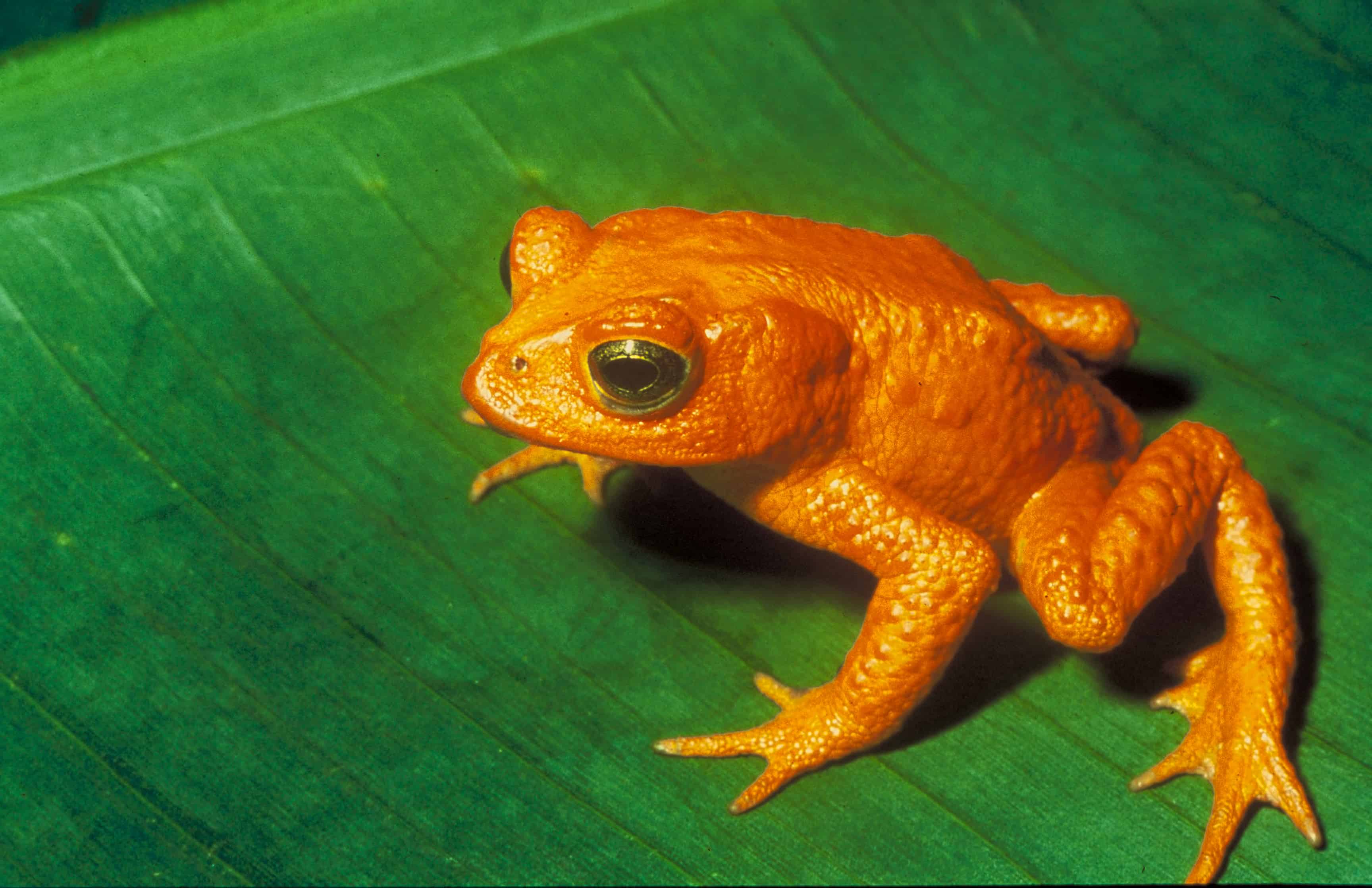The golden toad (Sapo Dorado) of Monteverde, in the Costa Rican jungle, disappeared more than three decades ago, a phenomenon that is now cited in UN reports as an example of the consequences of climate change.
Until 1989, generations of nature lovers and scientists marveled at the annual spectacle of these tiny, shiny-skinned batrachians emerging from underground to mate after the dry season.
It was a spectacle that lasted only a few hours. “The ground was very dark and the golden toads were silhouetted like figurines,” recalls Alan Pounds, an ecologist at the Monteverde Biological Reserve in Costa Rica.
The golden toad (Bufo periglenes), classified as an anuran amphibian, lived only in the Monteverde jungle.
A “cousin”, the Panamanian golden frog (Atelopus zeteki), is critically endangered due to a fungus. The latest report of the UN panel of climate experts (IPCC) specifically cites the Costa Rican toad as one of the victims of climate change.
“Approximately 99% of its population was lost in one year,” Alan Pounds, whose studies are cited in the IPCC report, explained to AFP.
In the case of the Panama batrachian, experts point to the deadly effect of Chytrid Fungus, a “superfungus” that was initially detected on the Korean peninsula.
Alan Pounds insists that it is climate change, which exacerbated the El Niño phenomenon that periodically affects Latin America, that caused the disappearance of the Costa Rican toad, which other experts attribute to the same deadly fungus.
“The disease is the bullet that kills the frogs, but climate change is the one that pulls the trigger,” Pounds said when he presented his studies.
Another animal endemic to the Monteverde reserve, the Harlequin frog, has also practically disappeared, although some scientists claim to have seen some specimens.
According to the International Union for Conservation of Nature (IUCN), climate change is a threat to about 12,000 species, of which 6,000 are at risk of extinction.
The international community opened formal negotiations to protect the planet’s biodiversity this year. The main objective is to protect at least 30% of land and oceans by 2030.
But according to experts, the threat is more profound for sites like Monteverde. Rainfall has increased over the last 50 years in the region, but rain falls irregularly.
In the 1970s, the Costa Rican jungle suffered 25 days of drought a year. In the last decade those days have increased to an average of 115.
The humidity that kept the jungle soggy and facilitated the survival of the batrachians has been reduced by 70%. Pounds explains that sometimes tourists ask him in Monteverde where the famous “rainforest” is.
“I reply, ‘they’re already inside.’ It often looks more like a dust cloud than a rainforest,” he laments.
by Kelly MACNAMARA






